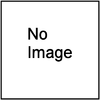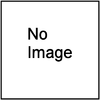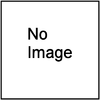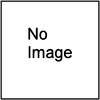 The Marks V and VI Churchill were armed with either a 75mm or a 95mm gun and this manual covers both Marks of this famous vehicle. The descriptions and illustrations make the whole vehicle come alive. Every aspect is covered and there are many drawings to accompany and clarify the text. Complete with stowage diagrams.
Over 190 drawings and illustrations.
See also our reprints of the manuals for Tank, Infantry, Mark I (Churchill I) and Churchill VI/VIII.
The Marks V and VI Churchill were armed with either a 75mm or a 95mm gun and this manual covers both Marks of this famous vehicle. The descriptions and illustrations make the whole vehicle come alive. Every aspect is covered and there are many drawings to accompany and clarify the text. Complete with stowage diagrams.
Over 190 drawings and illustrations.
See also our reprints of the manuals for Tank, Infantry, Mark I (Churchill I) and Churchill VI/VIII.
 This is a reprint of the first edition of the Churchill VII manual, a typescript book with good illustrations. It covers both the armament of the Churchill Mark VII (the 75mm main armament and the coaxial 7.92mm BESA) and gunnery. It is a very valuable source of knowledge on tank guns and tank gunnery.
This is a reprint of the first edition of the Churchill VII manual, a typescript book with good illustrations. It covers both the armament of the Churchill Mark VII (the 75mm main armament and the coaxial 7.92mm BESA) and gunnery. It is a very valuable source of knowledge on tank guns and tank gunnery.
 The user manual for armament fitted to the Comet I tank. The 77mm gun was a downgraded version of the famous 17pr antitank gun and is fully described together with ammunition, sighting equipment, gun control systems, gun drill, maintenance and spares. Also includes the BESA 7.92mm machine gun and the 2-in Bomb Thrower. Originals of the manual are scarce. Profusely illustrated with 76 plates and line drawings.
The user manual for armament fitted to the Comet I tank. The 77mm gun was a downgraded version of the famous 17pr antitank gun and is fully described together with ammunition, sighting equipment, gun control systems, gun drill, maintenance and spares. Also includes the BESA 7.92mm machine gun and the 2-in Bomb Thrower. Originals of the manual are scarce. Profusely illustrated with 76 plates and line drawings.
 The Crocodile Flame Throwing equipment was one of the modifications made to the Churchill tank, and proved to be of significant value in the fighting following D-Day and the invasion of Normandy. It was particularly suited to flushing pill boxes, woods and built-up areas and highly respected by those who used it, and feared by the Germans. This manual is a typescript manuscript covering the equipment and its maintenance together with a number of observations on its use. It is extremely rare, and this reprint is an essential tool in any study of infantry-tank cooperation or of the characteristics and use of specialised armour. Not to be missed!
The Crocodile Flame Throwing equipment was one of the modifications made to the Churchill tank, and proved to be of significant value in the fighting following D-Day and the invasion of Normandy. It was particularly suited to flushing pill boxes, woods and built-up areas and highly respected by those who used it, and feared by the Germans. This manual is a typescript manuscript covering the equipment and its maintenance together with a number of observations on its use. It is extremely rare, and this reprint is an essential tool in any study of infantry-tank cooperation or of the characteristics and use of specialised armour. Not to be missed!
 This is the first in a series of DWS publications to be reprinted by MLRS Books. This pamphlet (no. 12) covers grenades Nos. 36 (Mills), 57-61 (Smoke, Signal or Illuminating), 62 and 63 (Night signal, smoke), 67 (chemical anti-personnel), 68 (rifle, antitank), 69 (bakelite, assault), 73 (antitank), 74 ('sticky' antitank), 75 (Hawkins antitank), 76 ('milkbottle' incendiary) and 77 (smoke). All are illustrated with line drawings, and fillings and fuses are detailed.
This is the first in a series of DWS publications to be reprinted by MLRS Books. This pamphlet (no. 12) covers grenades Nos. 36 (Mills), 57-61 (Smoke, Signal or Illuminating), 62 and 63 (Night signal, smoke), 67 (chemical anti-personnel), 68 (rifle, antitank), 69 (bakelite, assault), 73 (antitank), 74 ('sticky' antitank), 75 (Hawkins antitank), 76 ('milkbottle' incendiary) and 77 (smoke). All are illustrated with line drawings, and fillings and fuses are detailed.
 This two-volume reprint contains all fifteen of the original War Office pamphlets on enemy ammunition published during the Second World War, together with the index (Vol 13A) and all the colour plates from Vol 15. The two volumes give a very detailed picture of ammunition in use by the Axis forces as it was experienced by the men on the ground. Accompanied by hundreds of drawings, this publication is essential to an understanding of one of the technologies of war - ammunition of all kinds. The volumes cover small arms ammunition, mortar bombs, grenades, gun and howitzer shell, special shells, rockets and many other items. Never before reprinted as a whole with all the appendices and colour plates. Available on one CD.
This two-volume reprint contains all fifteen of the original War Office pamphlets on enemy ammunition published during the Second World War, together with the index (Vol 13A) and all the colour plates from Vol 15. The two volumes give a very detailed picture of ammunition in use by the Axis forces as it was experienced by the men on the ground. Accompanied by hundreds of drawings, this publication is essential to an understanding of one of the technologies of war - ammunition of all kinds. The volumes cover small arms ammunition, mortar bombs, grenades, gun and howitzer shell, special shells, rockets and many other items. Never before reprinted as a whole with all the appendices and colour plates. Available on one CD.
 This is the Final report of 79th Armoured Division written and published in 1945 (and marked 'Secret').
It is a companion to our other publication on the 79th Armoured Division - The Characteristics and Tactical Employment of Specialised Armour. (See also "The Story of 79th Armoured Division").
The book covers all equipment used or proposed by 79th Armoured Division, together with details of the function of the Division, and the operational employment of specialised armour (but not in the detail of the title noted above).
The meat of this volume covers the organisation and tactical techniques used, and the special AFVs employed: the DD Tanks, Buffaloes, Flails, Crocodiles, Kangaroos, and other exotically named tanks and vehicles.
It covers mine clearing, flamethrowing and armoured engineer equipment, and gives details of new special equipment.
The book is a compendium not just for engineers and tank men, but is for infantry- and artillerymen as well - giving details of the type of support available from 'Hobart's funnies' on D-Day and afterwards.
Fully illustrated with many diagrams of equipment and photographs from the battlefields.
This is the Final report of 79th Armoured Division written and published in 1945 (and marked 'Secret').
It is a companion to our other publication on the 79th Armoured Division - The Characteristics and Tactical Employment of Specialised Armour. (See also "The Story of 79th Armoured Division").
The book covers all equipment used or proposed by 79th Armoured Division, together with details of the function of the Division, and the operational employment of specialised armour (but not in the detail of the title noted above).
The meat of this volume covers the organisation and tactical techniques used, and the special AFVs employed: the DD Tanks, Buffaloes, Flails, Crocodiles, Kangaroos, and other exotically named tanks and vehicles.
It covers mine clearing, flamethrowing and armoured engineer equipment, and gives details of new special equipment.
The book is a compendium not just for engineers and tank men, but is for infantry- and artillerymen as well - giving details of the type of support available from 'Hobart's funnies' on D-Day and afterwards.
Fully illustrated with many diagrams of equipment and photographs from the battlefields.
 This American manual contains a complete description of the German 10.5 cm howitzer, one of the main artillery piecces used by the Germans throughout the Second World War. The description covers all aspects of the weapon - barrel, carriage, recoil mechanism, sights, fire control equipment and ammunition and accessories. It also includes a complete set of range tables for all types of shell and charge. Like the 88mm manual (also reprinted by MLRS Books) it gives a complete picture of this weapon, and is profusely illustrated with many 'how-to' photographs.
This American manual contains a complete description of the German 10.5 cm howitzer, one of the main artillery piecces used by the Germans throughout the Second World War. The description covers all aspects of the weapon - barrel, carriage, recoil mechanism, sights, fire control equipment and ammunition and accessories. It also includes a complete set of range tables for all types of shell and charge. Like the 88mm manual (also reprinted by MLRS Books) it gives a complete picture of this weapon, and is profusely illustrated with many 'how-to' photographs.
German infantry weapons: a detailed look at all infantry battalion weapons, including pistols, rifles, machine guns, machine pistols and lmortars as well as infantry guns. It includes details of ammunition and packaging. Line drawings and photographs complete a first class publication on a very important topic. Includes diagrams.
 Details of all mines, mine fuses, detonators and booby traps in German service in the second half of World War II.
This pamphlet was issued to troops in mid-1943 and contains details and descriptions of all mines (anti-personnel and anti-tank) in use by the Germans. Virtually nothing new was introduced after this pamphlet was produced, making it important for anyone interested in the subject.
Highly recommended because of the illustrations, which show how these devices worked and the components. Also shows how booby traps were set up and operated.
The pamphlet includes foreign mines in use.
Details of all mines, mine fuses, detonators and booby traps in German service in the second half of World War II.
This pamphlet was issued to troops in mid-1943 and contains details and descriptions of all mines (anti-personnel and anti-tank) in use by the Germans. Virtually nothing new was introduced after this pamphlet was produced, making it important for anyone interested in the subject.
Highly recommended because of the illustrations, which show how these devices worked and the components. Also shows how booby traps were set up and operated.
The pamphlet includes foreign mines in use.
 General Burkhart Mueller-Hillebrand was a very experienced armour specialist in the German Army, and published two good handbooks on German tanks after the war. However this very important paper has never been published before, and it covers all German tank losses in World War II. The appendices are reprinted on A1 sheets because of their scope and detail. The paper also looks at allocations of AFVs to theatres.
General Burkhart Mueller-Hillebrand was a very experienced armour specialist in the German Army, and published two good handbooks on German tanks after the war. However this very important paper has never been published before, and it covers all German tank losses in World War II. The appendices are reprinted on A1 sheets because of their scope and detail. The paper also looks at allocations of AFVs to theatres.
 The 25 pounder was the main field artillery gun used by British and colonial infantry and armoured divisions of all types during the Second World War. Throughout the war each British-pattern infantry division was established with seventy-two 25 pounders. After mid 1940 each of the division's three field Regiments being issued with 24 guns organised into three 8 gun batteries, before mid 1940 each regiment had two batteries of 12 guns. This is the complete manual as issued in 1940 and includes 17 A3 foldout drawings.
The 25 pounder was the main field artillery gun used by British and colonial infantry and armoured divisions of all types during the Second World War. Throughout the war each British-pattern infantry division was established with seventy-two 25 pounders. After mid 1940 each of the division's three field Regiments being issued with 24 guns organised into three 8 gun batteries, before mid 1940 each regiment had two batteries of 12 guns. This is the complete manual as issued in 1940 and includes 17 A3 foldout drawings.
 This is a reprint of the manual for the famous British 3.7-inch antiaircraft gun which served throughout the war and had many aircraft to its credit. It was often thought that it could be the equal of the German 88 and also be used as an antitank gun, but this manual will show that weight and operating systems of the static version would not make this possible, nor would the ammunition. A complete manual on the gun it covers every aspect of it including the gun itself, its mounting, sighting and ammunition. Illustrated with 37 A3 plates with more than adequate photographs. This is a gem, and is worth the price for the information it contains and the drawings.
This is a reprint of the manual for the famous British 3.7-inch antiaircraft gun which served throughout the war and had many aircraft to its credit. It was often thought that it could be the equal of the German 88 and also be used as an antitank gun, but this manual will show that weight and operating systems of the static version would not make this possible, nor would the ammunition. A complete manual on the gun it covers every aspect of it including the gun itself, its mounting, sighting and ammunition. Illustrated with 37 A3 plates with more than adequate photographs. This is a gem, and is worth the price for the information it contains and the drawings.
 The 4.5 inch Howitzer of 1927 was an improved weapon which benefitted from WWI experience. This is the complete manual of the gun and includes details of the gun, the carriage, sights, limber and ammunition wagon, stores and ammunition. Illustrated with 26 plates, many of them A3 and in colour. Books of this period published by the War Office were well printed and the illustrations were an example in clarity which has never been surpassed. Well worth the purchase price for a rare item.
The 4.5 inch Howitzer of 1927 was an improved weapon which benefitted from WWI experience. This is the complete manual of the gun and includes details of the gun, the carriage, sights, limber and ammunition wagon, stores and ammunition. Illustrated with 26 plates, many of them A3 and in colour. Books of this period published by the War Office were well printed and the illustrations were an example in clarity which has never been surpassed. Well worth the purchase price for a rare item.
MLRS Books provide a download service for military historians and those interested in military history.
We specialise in primary source material and accounts which are assembled from such sources. We also publish new titles of specific interest in the field of military history and military genealogy.
MLRS Books offers a catalogue of resources via download only and
these are not printable. Should you want physical copies of our products, we
recommend visiting Caliver Books.
Payment is via Paypal, and prices are as quoted. Hopefully you will be pleased with your purchase,
however, do e-mail if it isn't and we'll try to fix it.






